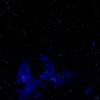I'm currently trying to get a user interface and Hud working in my game. Text based stuff works via Direct2D/DirectWrite
However, when i comes to graphical stuff I'm confused on how I should do that. I tried to to that with Direct2D's DrawBitmap function but somehow this only works when there is no 3D stuff to draw as well.
So I'm considering 3 options to do this via Direct3D
1. Make textured squares and rectangles in 3dsMax (or any modeller) and load these through my model loader, then draw them to screen.
2. Instead of making a model make a Quad class with Vertex and Index buffer and fill these buffers when instancing a Quad, the draw them to screen with another draw function.
3. Leave out buffers alltogether and instead have a shader do the heavy lifting, feeding it only the position and size of the quad while calculating vertex position and UVs in the shader, like in that fullscreen triangle code you can find all over the web.
I tried #3 and #2, with little to no success. Maybe I implemented it wrong, but maybe the whole approach is wrong.
So how do you guys usually do UIs/HuDs and what should I keep an eye on when making such stuff?
I need to be able to move and/or resize some of the UI stuff on the fly.



